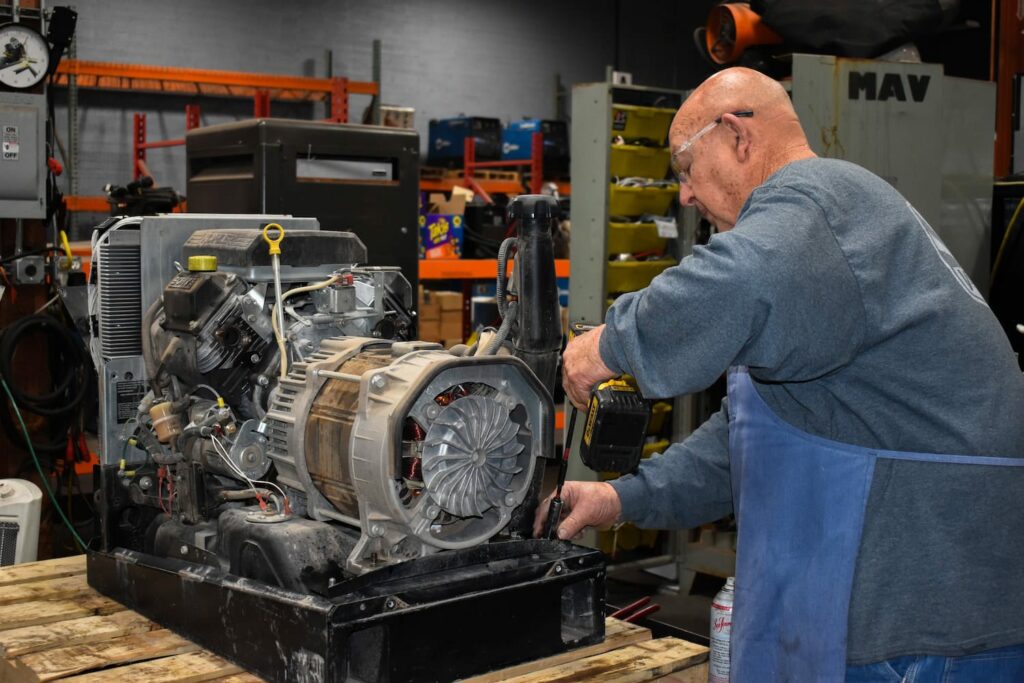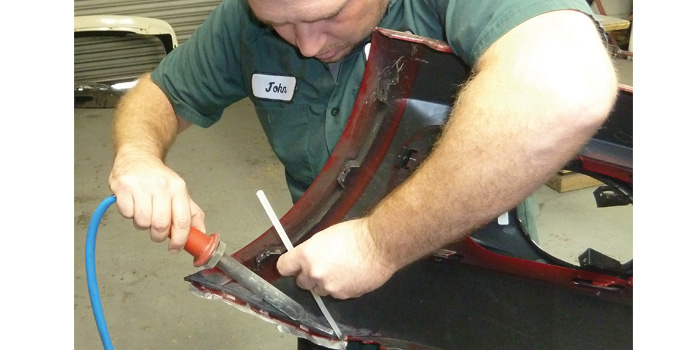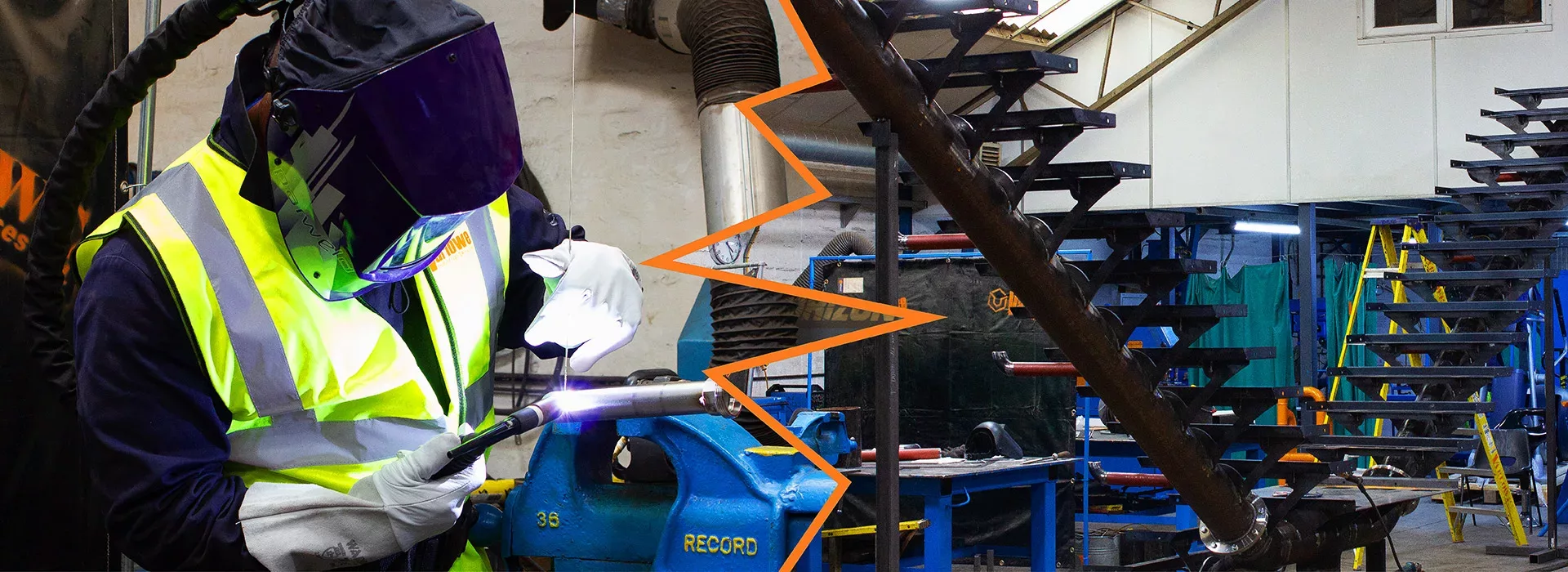Usual Welding Repair Work Issues and Exactly How to Address Them Properly
Welding repair services typically experience a series of concerns that can jeopardize the honesty of the final item. Common issues include poor penetration, porosity, and imbalance, to name a few. Each issue provides unique difficulties that require certain methods for resolution. Comprehending these concerns is vital for welders intending to boost their outcomes and skills. This conversation will certainly explore these usual welding repair issues and efficient approaches to resolve them.
Poor Infiltration
Inadequate infiltration occurs when the weld metal falls short to fully fuse with the base product, leading to weak joints and potential structural failings. This issue typically comes from not enough warm input, incorrect electrode angle, or inappropriate welding rate. Welders might run into inadequate penetration as a result of a miscalculation of the essential parameters for a particular material density or type. Furthermore, contamination on the base product's surface area can prevent efficient bonding, aggravating the trouble. To attend to poor penetration, welders need to assure appropriate settings on their devices and preserve a tidy job surface area. Normal inspection of welds is advised to recognize any kind of shortages early, permitting prompt corrections and the avoidance of jeopardized architectural stability in welded assemblies.
Porosity
Porosity is an usual flaw in bonded joints that materializes as small gas bubbles entraped within the weld metal. This problem can jeopardize the stability of the weld, resulting in lowered stamina and potential failure under anxiety. Montana Mobile Welding and Repair Belgrade Fabrication. Porosity generally arises from contamination, dampness, or incorrect welding techniques, which enable gases to leave into the molten weld swimming pool. To address porosity, welders ought to ensure appropriate surface prep work, maintain a tidy working environment, and use suitable welding criteria. In addition, picking the ideal filler product and shielding gas can reduce gas entrapment. Regular assessment and screening of welds can help determine porosity early, ensuring prompt corrective activities are taken, therefore protecting the high quality and dependability of the welded framework
Misalignment
Misalignment in welding can emerge from various elements, consisting of improper arrangement and thermal development. Understanding the root causes is crucial for effective resolution. A number of modification methods are offered to realign elements and guarantee architectural honesty.
Reasons of Imbalance
Welding misalignment commonly comes from a variety of underlying problems that can endanger structural integrity. One primary cause is incorrect fit-up of components before welding, which can bring about voids and irregular surfaces. Variations in thermal expansion during the welding procedure can likewise lead to distortion, especially if the materials being joined have different coefficients of growth. In addition, poor clamping and fixturing might fail to hold parts safely in location, causing movement during welding. Improperly kept devices, consisting of welding devices and tools, might present variances in the weld bead, more adding to misalignment. Driver error, stemming from insufficient training or experience, can additionally play a considerable role in creating misaligned welds.

Adjustment Strategies Readily Available
Resolving imbalance properly requires a combination of rehabilitative methods tailored to the details issues handy. One usual approach is the usage of jigs or components to hold components in the correct placement during welding, guaranteeing regular positioning. Furthermore, preheating the materials can assist reduce distortion and enhance fit-up. For substantial imbalance, mechanical adjustment techniques, such as utilizing hydraulic jacks or clamps, can be used to fix the setting before welding. Post-weld warmth therapy may also be required to ease tensions triggered by misalignment. Finally, cautious evaluation and change during the arrangement stage can stop misalignment issues from becoming significant troubles, advertising a smoother welding process and enhancing overall structural honesty.
Distortion
Distortion is an usual challenge in welding that can arise from numerous elements, including uneven home heating and cooling. Understanding the reasons for distortion is crucial for carrying out reliable avoidance techniques. Resolving this issue not just improves structural integrity but additionally enhances the general quality of the weld.
Root causes of Distortion
When based on the extreme heat of welding, products often undertake adjustments that can lead to distortion. This phenomenon mainly develops from thermal growth and contraction throughout the welding procedure. As the weld area warms up, the product broadens; upon air conditioning, it acquires, which can create interior stresses. Furthermore, uneven heating across a workpiece can aggravate these tensions, resulting in bending or bending. The type of product also tech weld plays a considerable role; steels with differing thermal conductivity and coefficients of development may respond in different ways, causing unforeseeable distortions. Poor joint layout and inadequate fixturing can add to imbalance during welding, boosting the possibility of distortion. Recognizing these reasons is necessary for efficient welding repair and avoidance strategies.
Prevention Techniques
Reliable prevention strategies for distortion throughout welding concentrate on managing warmth input and making certain proper joint design. Preserving a regular heat input helps to lessen thermal expansion and contraction, which can cause distortion. Using strategies such as preheating the workpiece can also lower the temperature gradient, promoting uniform heating. Additionally, selecting proper joint designs, such as T-joints or lap joints, can boost security and decrease tension concentrations. Carrying out appropriate fixturing to protect the work surfaces welding face shield in position better aids in keeping alignment during the welding procedure. Lastly, staggered welding series can disperse heat more evenly, stopping localized distortion. By using these methods, welders can considerably reduce the probability of distortion and boost the total high quality of their welds.
Cracking
Splitting is a common concern run into in welding repairs, usually resulting from various variables such as improper air conditioning rates, material choice, or insufficient joint preparation. The incident of cracks can greatly endanger the stability of the weld, causing prospective failings throughout operation. To resolve this problem, welders need to first analyze the source, guaranteeing that materials work and properly picked for the details application. Furthermore, regulating the cooling price throughout the welding procedure is necessary; fast air conditioning can generate tension and result in breaking. Proper joint design and prep work additionally contribute to reducing the danger. Executing these methods can boost weld quality and toughness, inevitably lowering the chance of splitting in finished weldments.

Incomplete Blend
A substantial concern in welding repair work is incomplete fusion, which occurs when the weld steel does not effectively bond with the base product or previous weld passes - Montana Mobile Welding and Repair Belgrade Fabrication. This defect can cause weak points in the joint, possibly endangering the stability of the welded structure. Factors contributing to incomplete blend advice include not enough warm input, inappropriate welding method, and contamination of the surfaces being signed up with. To address this problem properly, welders must ensure appropriate pre-weld cleaning and surface preparation, along with adjust their welding specifications to accomplish sufficient penetration and fusion. Regular assessment throughout the welding procedure can additionally assist determine insufficient blend early, enabling prompt restorative steps to boost the overall top quality of the weld
Overheating
While welding repair work can boost structural integrity, overheating presents a significant difficulty that can result in product degradation. Extreme heat throughout welding can alter the mechanical residential or commercial properties of metals, resulting in reduced strength, raised brittleness, and warping. This sensation is particularly crucial in high-stress applications where architectural dependability is vital. Determining overheating can include visual examinations for staining or distortion, in addition to keeping an eye on temperature during the welding procedure. To minimize the risks related to overheating, welders ought to use suitable strategies, such as managing warm input, readjusting travel speed, and using ideal filler products. Furthermore, implementing pre- and post-weld warmth treatments can aid restore product properties and enhance the overall quality of the repair work, making sure lasting efficiency and security.
Often Asked Questions
What Are the Common Indications of a Welding Problem?

Exactly How Can I Check My Welds for Quality?
To evaluate welds for high quality, one can utilize visual inspections, ultrasonic testing, and radiographic approaches. Each technique ensures structural integrity, determines issues, and validates adherence to specified standards, ultimately boosting the reliability of the welded joints.
What Safety Safety Measures Should I Take While Welding?
When welding, one must prioritize safety and security by putting on appropriate individual protective tools, guaranteeing appropriate air flow, securing flammable materials away, preserving a clean work area, and knowing environments to avoid injuries and crashes.
Can I Fix a Weld Without Renovating the Entire Joint?
Repairing a weld without redesigning the whole joint is feasible, depending upon the damage (Fabrication). Techniques such as grinding, including filler material, or using a welding procedure can properly resolve specific problems while preserving the bordering structure
What Devices Are Crucial for Reliable Welding Fixes?
Important tools for reliable welding repair work include a welding maker, wire brush, mill, safety gear, clamps, and filler materials. Each tool plays a crucial duty in guaranteeing top quality and safety and security throughout the repair procedure. Porosity usually arises from contamination, dampness, or improper welding strategies, which allow gases to get away right into the molten weld pool. Badly conserved equipment, consisting of welding machines and tools, might introduce inconsistencies in the weld bead, additional adding to misalignment. When subjected to the extreme warm of welding, materials usually undertake modifications that can lead to distortion. Breaking is an usual problem run into in welding fixings, typically resulting from numerous aspects such as incorrect cooling prices, material selection, or insufficient joint preparation. A considerable concern in welding repairs is insufficient blend, which happens when the weld steel does not effectively bond with the base product or previous weld passes.